Hyper V, Microsoft's virtual machine software
has, for the first time, been incorporated in the
Windows Client software. Prior to Windows 8 Hyper V
had been packages only with the Windows Server
versions.
To utilize Hyper V your system must support 64
Bit Second Level Address technology. Fortunately,
current versions of Intel and AMD processors support
this form of technology. As well as your processor
supporting SLAT you are also going to need a minimum
of 4GB of Random Access Memory (RAM). This allows
for a minimum of 1GB of RAM allocation per virtual
machine. With this configuration it is possible to
run 3 virtual machines. The guest operating system,
i.e., Windows 8 would also be running on 1 GB of
RAM. Further virtual machines will, of course,
require more RAM.
While Microsoft insist that 4GB of RAM is the
minimum, we can say that, we have successfully run a
virtual machine with a minimum of 3GB system RAM.
HHyper V isn't enabled by default so, if you want
to try it out, the first thing you need to do is
enable it. To do that follow the instructions below:
- On the Metro screen touch the Control Panel
App. When the Control Panel opens scroll down
the list of options until you come to More
Setting. Click on More Settings and Control
Panel will open.
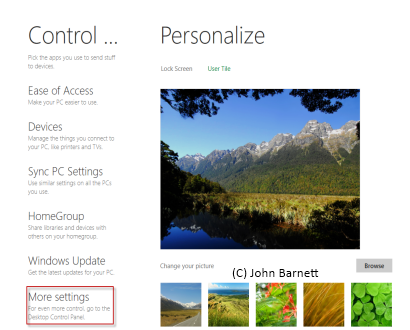
Fig: 8-1-1 Control Panel
Window
- In the Control Panel Window, Click on the
Program and Features option.
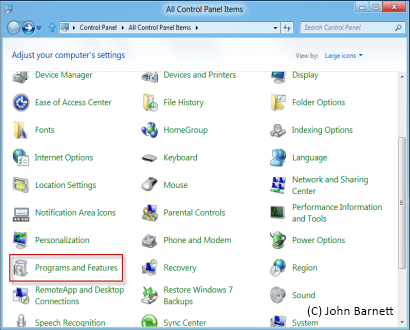
Fig: 8-1-2 Click the Program
and Features to make the necessary changes
- In the Program and Features Window look to
the left of the Window and under Control Panel
Home you will see an option marked Turn Windows
Features On or Off. Click on the Turn Windows
Features On or Off to open up the next window.
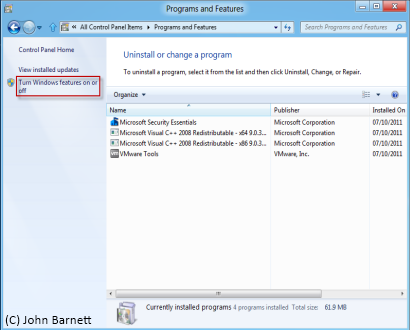
Fig: 8-1-3 On the Control
Panel Home pane you will see the Turn Windows
Features On and Off option
- The Windows Feature window will now appear.
Look down the list of options and place a Check
Mark (Tick) next to the Hyper V option. Next
Click the OK Button.
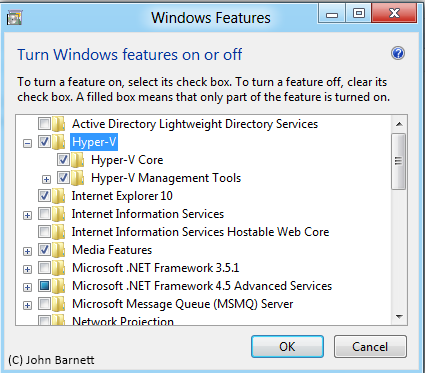
Fig: 8-1-4 Enable the Hyper V
option by placing a check mark in the box to the
left of the Hyper V option
- An Applying changes to features box will now
appear.
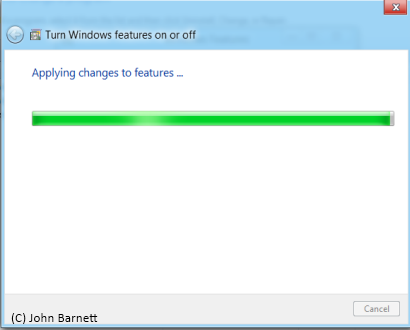
Fig: 8-1-5 The Progress bar
shows that changes are being made
- Once the changes have been implemented you
will see a window which states that Windows
successfully completed the requested change. At
this point you will need to Restart your PC.
Click the Restart Now button to continue.
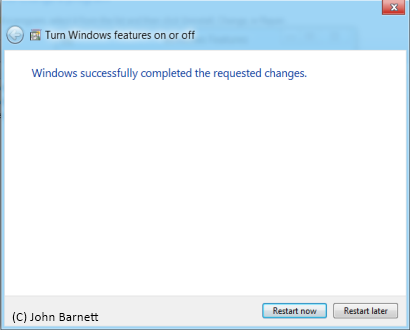
Fig: 8-1-6 Once the changes
have been made, Restart your computer
- After your PC has Restarted you should find
an Hyper V Manager Application icon on the Metro
GUI.
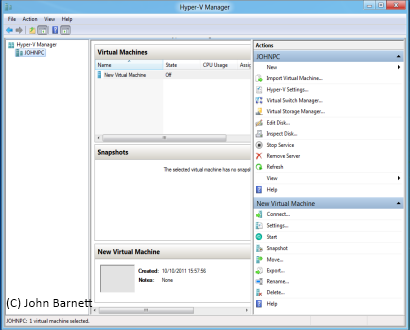
Fig: 8-1-7 The Hyper V
Manager is your starting point for creating a
new Virtual Machine
- You can begin to create a new Virtual
Machine from the Hyper V Manager GUI.